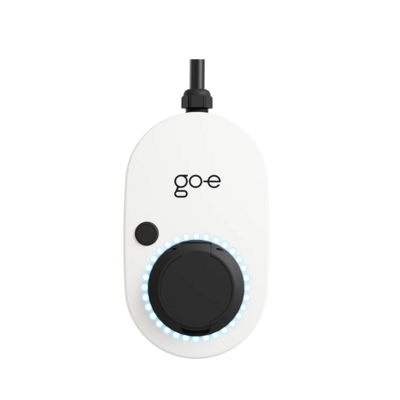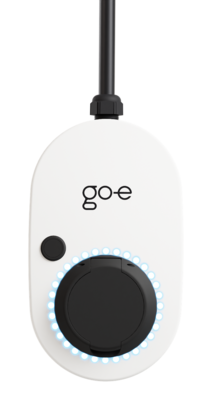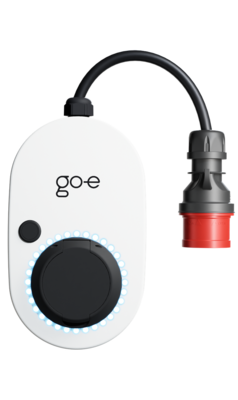How to Charge an Electric Car?
Last updated:
If you want to buy an electric car, you will have to deal with the issue of charging like it or not.
Currently, there are several ways to charge your electric car or plug-in hybrid.
We’re here to explain what they are and what the advantages and disadvantages might be.
Before we get started, you should know that you can charge your electric car with direct current (DC) or alternating current (AC). Private wallboxes are AC charging stations, while public charging stations offer both DC and AC charging, depending on the location. On motorways, there are often DC charging stations, which enable much faster charging.
Do you want to allow Integration of youtube videos?
Allows the playback of videos, that are hosted on youtube.com. By allowing this feature, you accept the privacy agreement of google.
How to Charge an Electric Car? How does it Work?
We’ll start with the slowest charging method: charging from a regular household socket.
You can charge in either Mode 1 or Mode 2 from a normal socket, although Mode 1 charging is not recommended. Why? You’re about to find out.
Option #1: Charging an EV From a Regular Power Socket in Mode 1
You need an emergency charging cable for Mode 1 charging from a household socket. Obviously, it’s intended for emergencies when no other solutions are available. You plug one end of the charging cable into the socket of the electric car and the other into the household socket.
Mode 1 charging, however, has two major disadvantages.
- Firstly, it takes a very long time, usually between 18-24 hours, as the charging power is only 2.3 kW. So in practice, it is very tedious.
- Secondly, in Mode 1, there are no protection mechanisms and communication between your car and the socket. This can lead to a fire and is therefore dangerous for your home, your electric vehicle, and also the person charging the car. This is why this type of charging is prohibited in many European countries.
Therefore, we suggest saying no to the Mode 1 charging.
There are better alternatives if you still want to charge from a household socket.
Option #2: Charging an EV from a Regular Power Socket in Mode 2
For instance, you can charge in Mode 2 with a charging cable with ICCB, i.e. a charging cable equipped with a so-called in-cable control box. This charging cable has a small control box that ensures safe charging from a household socket.
But even with this, charging can take up to 24 hours because you can only charge at 3.7 kW. For everyday use, this is usually a bit impractical.
And that brings us to the third option: charging with a wallbox.
Option #3: Charging Your Electric Car with Your Own Wallbox
With a wallbox, your car can be charged in 2-6 hours. Depending on the charging power and other factors.
If you want to buy a wallbox for your home, you can choose between a mobile or stationary wallbox.
The mobile wallbox, as the name suggests, is portable.
You can use it as a stationary device at home, but you can also take it with you when you travel to friends or family to charge your electric car there.
In the case of our mobile wallbox, the go-e Charger Gemini flex, you don't need an electrician to install it. You can easily install it yourself.
There are several advantages of owning a wallbox.
- You can easily charge your electric car at home while sitting comfortably on the couch, watching a movie, or sleeping.
- Charging with a wallbox is much faster than from a regular socket. Instead of charging your electric car for almost a whole day, you usually only charge for 2-6 hours with a wallbox.
- Charging with a private AC wallbox allows you to control and communicate with the electric car. This means that you can charge safely.
- You save money compared to charging at a public charging station.
go-e Charger Gemini 11 kW

The compact wallbox for stationary use, at home or at the workplace. Simple installation, intuitive operation and smart comfort functions. Charging power from 1.4 kW to 11 kW. 1-phase or 3-phase charging.
go-e Charger Gemini 22 kW

The compact wallbox for stationary use, at home or at the workplace. Simple installation, intuitive operation and smart comfort functions. Charging power from 1.4 kW to 22 kW. 1-phase or 3-phase charging.
go-e Charger Gemini flex 11 kW

The intelligent wallbox can be used both stationary in the wall bracket and mobile. No electrician is required for the installation of the charging station. Charging power from 1.4 kW to 11 kW. 1-phase or 3-phase charging.
go-e Charger Gemini flex 22 kW

The intelligent wallbox can be used both stationary in the wall bracket and mobile. No electrician is required for the installation of the charging station. Charging power from 1.4 kW to 22 kW. 1-phase or 3-phase charging.
Option #4: Charging the Electric Car at a Public Charging Station
The last option is public charging. Here you can charge with AC or DC. DC charging stations are usually found along motorways.
The advantage of DC charging stations is that you can quickly charge your car. This is why they are also called fast charging stations.
The charging power of some DC charging stations is up to 250 kW. If you charge your electric car at a fast charging station, it can be charged from 0 to 80% in about 30-45 minutes. However, the actual charging power depends on various factors.
In addition, you do not need your own charging cable at public DC charging stations, as they are always equipped with one.
However, DC charging stations also have disadvantages.
- Unlike the private wallbox and especially the mobile wallbox, you are dependent on the location of the DC charging stations. If there is no DC charging station nearby when you need it on the way, you simply cannot charge.
- If DC charging stations are used regularly, the performance and condition of the battery can be affected. Unfortunately, this is not only a myth but is also sometimes included by some electric car manufacturers as a warning in their manuals.
- Charging at a public DC charging station is also more expensive than charging at a private or public AC charging station.
Summary
Electric car owners have many options for charging their vehicles. However, home charging remains the most convenient and cheapest variant. If you are planning to get yourself a home charging station, check out our guide on choosing the most suitable one.


